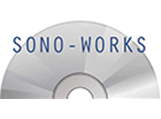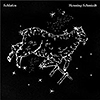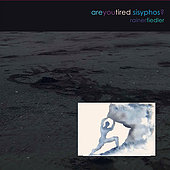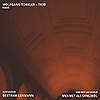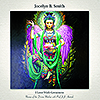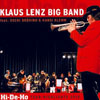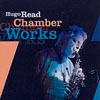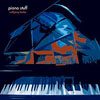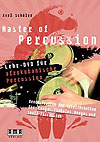VINYL MASTERING IN DETAIL
About the maximum length of a vinyl record
It depends on the desired sound, style and its loudness. The more it has to contain powerful deep frequencies the more space is needed on the lacquer. That means that for example a loud Hip-Hop production should not be longer than 10 or 15 minutes per side. Against this a chamber music production without many bass could have a length of 25 or maximum (!) 30 minutes per side. The average frequency spectrum and the desired length also has impact to the loudness level which will be chosen by the cutting engineer.
What differs mastering for vinyl from mastering for CD?
Already while mixing for vinyl certain technical peculiarities in vinyl cutting should be considered. Otherwise, this must be done while mastering, if you want to keep control about the sound on the vinyl record, compared to the original sound concept. Here are the most important points:
If a mix contains instruments with lots of side signals (broad sound) in the low end, these signals would cause a strong sideways movement of the groove when cutting vinyl, thus reducing the available space (= time) per side. To avoid this, these signals would have to be mono summed by the vinyl cutter. This can reach up to 300 Hz in frequency ranges.
When mastering for vinyl, I would therefore monitor the processing in the low end mainly in mono. So I would be able to hear the possible consequences of a mono-summation in vinyl editing already while my sound processing. But if the mix engineer would pay attention to the mid/side ratio while mixing the low instruments, it would be less necessary to change (and maybe corrupt) this in a mastering process.
By the way: with vinyl discs from the 70s, which were produced quite powerful in the bass range and with a wide stereo image, often one can hardly hear differences between mono and stereo in the mix and in the frequency spectrum.
This is also because signals above 300 Hz are less problematic, even if they are "out of phase". So you have more latitude for the spread of the sounds in the stereo base in this area. When mixing this area you can also take into account that the channel separation is naturally more limited in the playback of vinyl records compared to digital media. Nevertheless, I would recommend to at least strive for monocompatibility in all frequency ranges.
In the range of heights, it should be noted that signals with strong and complex proportions of height (sibilants, cymbals, hi-hats, etc.) stress (heat) the cutting mechanism strongly. Therefore, these sounds may need to be limited by the cutter using de-esser or filter. To keep control of these effects, I would already take care of this in the mastering process. But the possibilities are limited. A de-esser or low-pass filter in a stereo mix usually causes collateral damages in the sounds, whose heights are less problematic for the vinyl cutting and therefore should be as untouched as possible.
If, on the other hand, the mix engineer would smooth the comlex hights only on the tracks with vocals, cymbals, and possibly hi-hat with de-esser, dynamic filter, etc., this can be avoided. Incidentally, considering that over-emphasized highs and high mids tend to be annoying on digital media as well and are most responsible for harming the ears, I cannot see any reason to mix and master differently for vinyl in terms of frequency spectrum than for digital media.
When defining the track sequence, one can take into account that the tolerance for high levels in low and high end decreases toward the middle of the vinyl disc. That can mean that the closer the groove gets to the label in the middle, the more distortion will be heard in the highs and high mids. This can be avoided in two ways: either you shorten the play time per page (e.g. to max. 15 min.) so that the space on the disc does not have to be used completely to the middle, or you preferably place the most powerful tracks with lots of bass an hights on the first position on each page.
What to do if an album is intended for CD and vinyl?
Considering the described criteria for a production specifically for vinyl, these are not inconsistent with a possible release of the same tracks on an audio cd. To the contrary: the tonal monocompatibility and the limitation of grueling heights benefit every medium. If the instructions for dealing with depths, stereo image and sibilance in the mix for vinyl are considered, it is hardly necessary to master alternative versions for cd – at least not with regard to the sound processing. Based on the mastering for high-resolution digital media, it could make sense to prepare a few things for the vinyl cutting that otherwise must be made by the cutting engineer.
The difference between the master files intended for vinyl and a finished audio CD master mainly is the audio format to be delivered. A vinyl master should have the highest possible sample rate and bit depth (e.g. 88.2 kHz or higher and at least 24 bits). However, up-sampling after mastering does not make sense, because it does not improve the audio quality. If the mix (before mastering) comes with a 44.1 kHz sample rate, it could be converted to 88.2 kHz for the following mastering processes – see also MASTERING STRATEGIES. The advantage of 88.2 kHz compared to for instance 96 kHz would be that 88.2 kHz are more suitable for exporting a CD master, because this sample rate only must be converted in the ratio 2:1 (a relatively lossless sample rate conversion). Whether for vinyl or for audio CD the audio editing could be done best with a sample rate of 88.2 kHz in 32-bit float format. The tracks can be delivered to a vinyl cut in this format also.
The Track sequence and the pauses between the tracks on the vinyl record
In opposite to a master media for an audio cd (e.g. DDP image) which contains all the necessary information, for the vinyl record one of this options must be chosen:
- We could deliver the tracks as individual wave files with file names or other hints for the chronological order. And we let the vinyl cutting engineer decide about the pauses between the tracks (unrecommended).
- We deliver two wave files with the whole A- and/or B-sides – thus including the pauses between the tracks. In addition we deliver a TOC (table of contents or "time sheet") to ensure that the cutter is perfect informed about the grooves for pauses between the songs.
- We deliver the tracks as individual wave files (see 1.) in connection with a TOC (see 2.) for both sides which contains the desired pause times between the tracks exactly.
- We deliver the tracks as individual wave files, but with the desired pause in the end, and inform the cutting engineer about the idea behind that (not really recommended).
Actually, only option 2. and 3. are seriously considered. Which of these will be best suited for all, should be best discussed with the cutting engineer. You should also request a disc draft and thoroughly review it before the final cutting and reproduction will be done.
© 2017 by W. Fiedler


